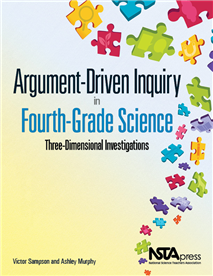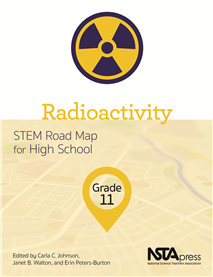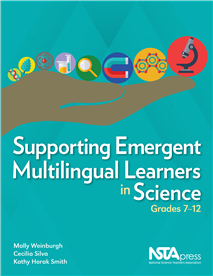All Book Chapters
Book Chapter
The guiding question of this investigation is, Why can we see the roots of trees that grow near rivers or streams? Roots of trees are usually underground. In this lesson, the goal is to figure out why trees that grow near rivers or streams often hav...
Book Chapter
The guiding question of this investigation is, Why do large waves often block the entrance to some harbors in New Zealand? In this lesson, the goal is to figure out how nautical charts can be used to locate different land and water features on Eart...
Book Chapter
This lesson provides a basic introduction to nuclear chemistry and exponential functions. Students learn about the discovery and history of radioactive elements and the scientific and societal implications of these discoveries. They model natural rad...
Book Chapter
In this lesson, students explore the process of nuclear fission from historical, scientific, and environmental perspectives. They focus on how nuclear fission is used in pressurized water reactors (PWRs), the type of nuclear reactors most commonly us...
Book Chapter
Nuclear Fusion: Harnessing the Power of the Stars
In this lesson, students consider nuclear fusion and its potential to meet human energy needs in the future, as well as the substantial technology and engineering challenges associated with creating fusion reactions. They compare and contrast the pro...
Book Chapter
In this lesson, students continue their consideration of nuclear fission and its practical application in power plants by examining the events leading to the 1979 Three Mile Island (TMI) nuclear accident and the response. They analyze a multidiscipli...
Book Chapter
The Gammatown Crisis Challenge
In this lesson, students synthesize their learning from the previous lessons to address the module’s culminating challenge—the Gammatown Crisis Challenge. Student teams are each challenged to assume the role of one of several stakeholder groups t...
Book Chapter
This lesson introduces students to the module challenge—the Rainwater Roundup Challenge. Through a slideshow and water activity, students learn about water as a scarce natural resource. As a foundation for understanding the relationship between sta...
Book Chapter
In this lesson, students continue to explore rainwater by examining the interconnectedness of Earth’s spheres. Students investigate water handling features at home and in school while conducting surveys. They learn about the need to improvise to bu...
Book Chapter
In this lesson, students continue to address the Rainwater Roundup Challenge as they determine the best shape and dimensions for a storage container for rainwater collection. Students compare their rain gauge data with rainfall data from previous yea...
Book Chapter
The Rainwater Roundup Challenge
This lesson begins with a student email to the teacher for the class bringing to their attention a big problem with the rainwater-recycling project—gravity! Students are challenged to help create solutions for this problem. To move forward with the...
Book Chapter
The Hybrid Language of the Science Classroom
In this chapter, ways are discussed in which language serves different social purposes. We highlight the social language of science as a unique hybrid that includes four modes—natural language, mathematical expressions, visual representations, and ...
Book Chapter
Inquiry-Based Science as a Context for Communication
In this chapter, ways are examined in which you can make use of science inquiry lessons to support the development of the multimodal language of science. We focus on science as a context for language learning and explore inquiry practices of science....
Book Chapter
The 5R Instructional Model for Science Instruction for Emerging Multilinguals
In our effort to support inquiry-based lessons and hybrid language learning, we developed the 5R Instructional Model. This chapter outlines the Model in general terms, and envisions it as an instructional tool for designing lessons that provide scaff...
Book Chapter
In this chapter, replace is discussed as one component of the 5R Instructional Model. Replacing serves to facilitate the development of more precise ways of meaning-making using the hybrid language of science. Replacements mostly involve a one-to-o...





